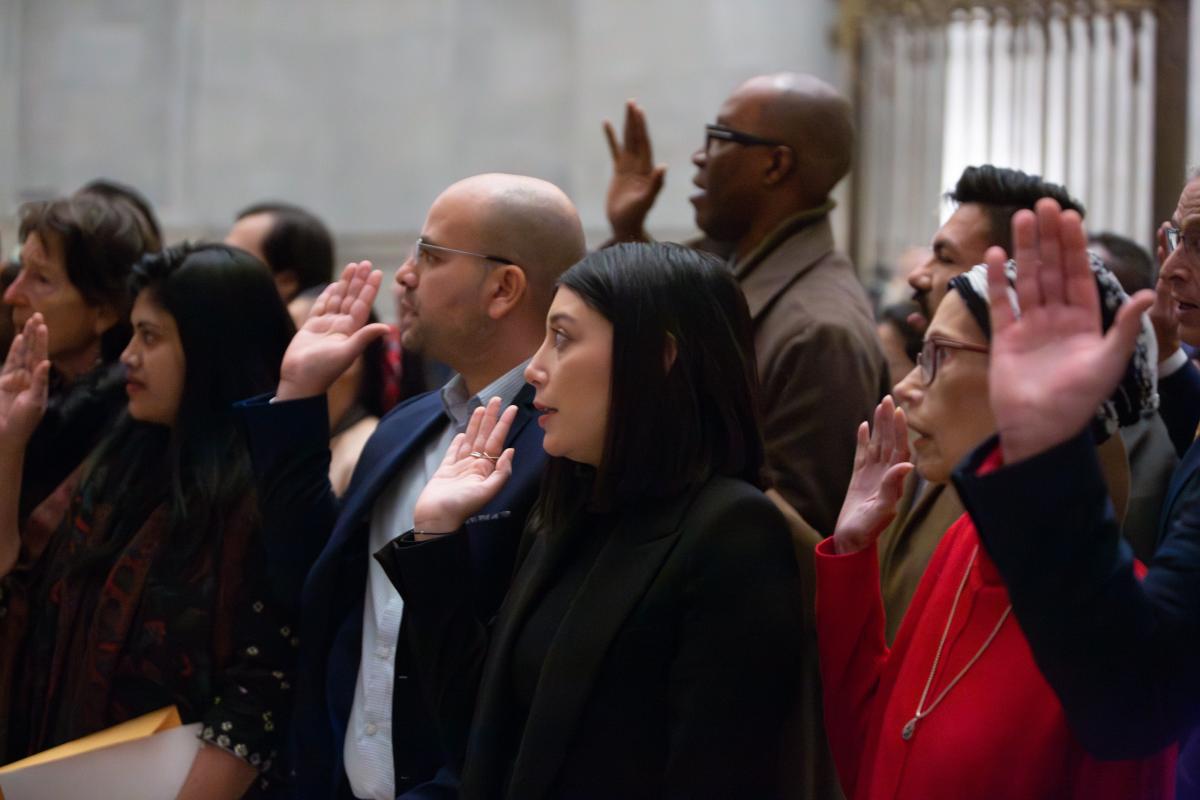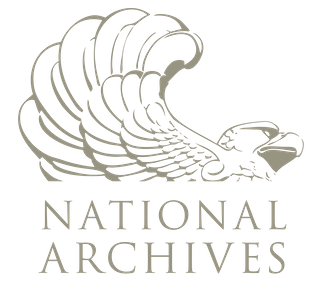The following is a press release issued by the National Archives and Records Administration:
WASHINGTON, December 15, 2023 – In celebration of Bill of Rights Day, observed annually on December 15, 25 people from 25 nations were sworn in as U.S. citizens in front of the nation’s Founding Documents, the Bill of Rights, the Constitution, and the Declaration of Independence, in the Rotunda of the National Archives Building in Washington, DC.

Enlarge
 On Bill of Rights Day, 25 people frorm 25 countries took the oath of citizenship in the Rotunda of the National Archives. (National Archives photo by Susana Raab)
On Bill of Rights Day, 25 people frorm 25 countries took the oath of citizenship in the Rotunda of the National Archives. (National Archives photo by Susana Raab)
The National Archives traditionally hosts two naturalization ceremonies in the Rotunda each year, the first in September to mark Constitution Day and the second in December in honor of Bill of Rights Day.
Dr. Colleen Shogan, Archivist of the United States, served as the host for the ceremony. The Honorable Elizabeth L. Gunn, a judge in the U.S. Bankruptcy Court for the District of Columbia, presided as the petitioners took the oath of citizenship. Students from MacArthur High School in Washington, DC, recited the Preamble of the Constitution.
Shogan spoke to the new citizens about the importance of the Founding Documents to the country, and the rights they guarantee for all U.S. citizens.
“These three founding documents are a testament to the enduring values of freedom, justice, and equality that we continuously strive to perfect. They are living promises—a covenant between the government and its citizens,” she said. “You are now part of that promise, and as Americans, these documents belong to you.”
Former First Lady of the United States Melania Trump, herself a naturalized citizen, served as the keynote speaker. She acknowledged the long journeys the new citizens had taken to get to where they are today.
“I applaud you for every step you took, every obstacle you overcame, and every sacrifice you made,” Trump said. “You are now a part of a nation with a rich history of progress, innovation and resilience. Though you all come from 25 different countries, your dreams and inspirations intertwine with those who came before you since 1776, and together, feed the future of this extraordinary country.”
The 25 new citizens are originally from Afghanistan, Australia, Bangladesh, Belgium, Bolivia, Cameroon, China, El Salvador, Ethiopia, France, Germany, Guatemala, Guyana, Haiti, Italy, Mexico, Nigeria, Peru, Philippines, Senegal, Serbia, South Africa, Sri Lanka, Trinidad and Tobago, and the United Kingdom.
Dinesh Prabaharan, a business analyst originally from Sri Lanka, was among those who gained U.S. citizenship. He expressed excitement and a desire to affect positive change in his new home nation.
“To say without restriction that this [country] is my home, is an indescribable feeling,” Prabaharan said. “As newly minted citizens, we not only have a duty, but the unique privilege to make our new home a better place than when we were first welcomed into it. This is something so profound, and I am very grateful for that!”
Carlos Javier Vaca Valverde, a tax professional originally from Bolivia, praised the United States for the myriad possibilities it avails to its citizens.
“I think the opportunities this country provides are unparalleled in the world,” Vaca Valverde said. “I love its culture, its opportunities, its freedoms. It’s welcoming to all cultures. And I look forward to living here.”
This year’s Bill of Rights Day commemorates the 232nd anniversary of the ratification of the first 10 amendments to the U.S. Constitution. Learn more online about the Bill of Rights through our public programs, family activities, and online resources.
This program was presented thanks to a long-standing partnership between the U.S. District Court for the District of Columbia and the Department of Homeland Security U.S. Citizenship and Immigration Services (USCIS).
To view photos from this ceremony, visit the National Archives Flickr page.
 Latest News Articles
Latest News Articles Do you have an RSS newsreader? You may prefer to use this newsletter's RSS feed at:
Do you have an RSS newsreader? You may prefer to use this newsletter's RSS feed at: